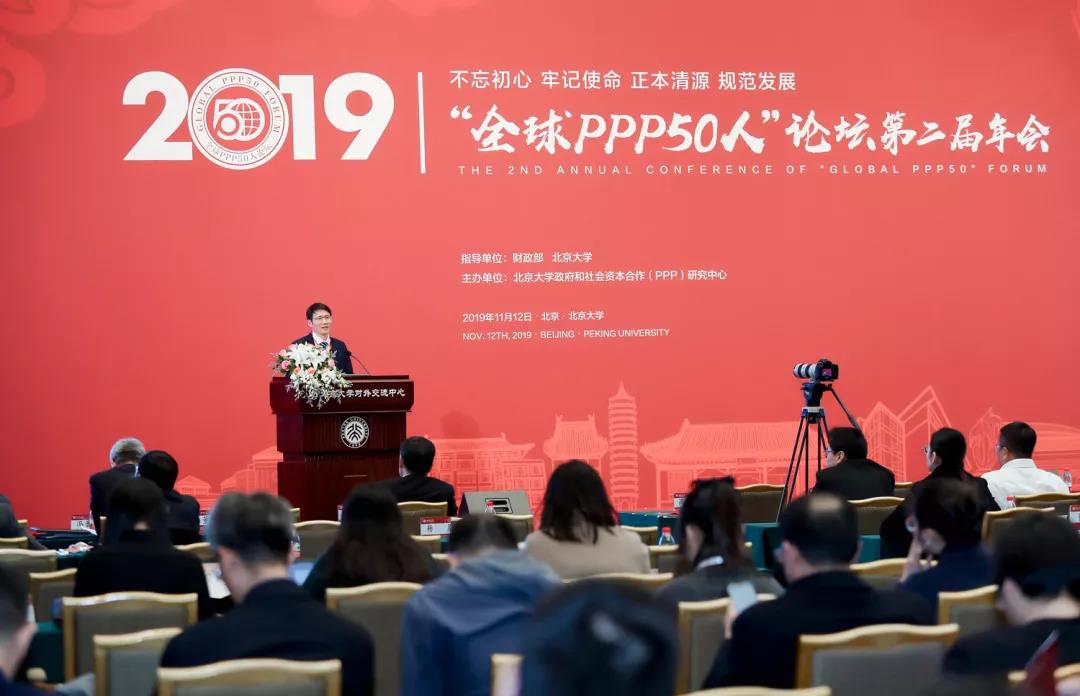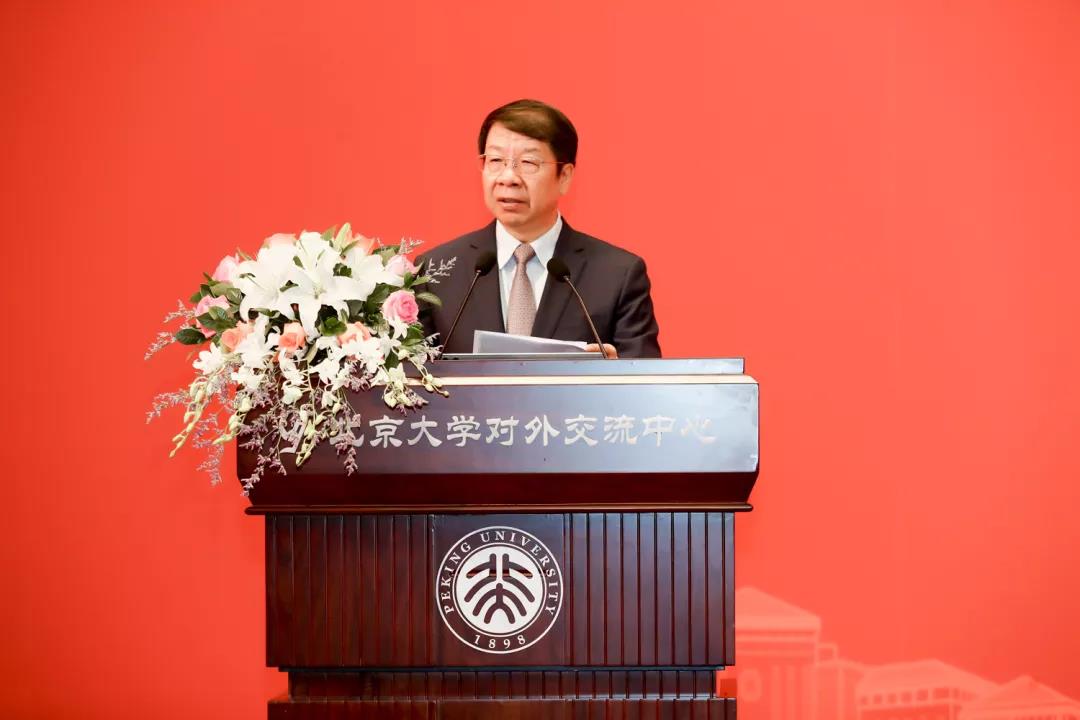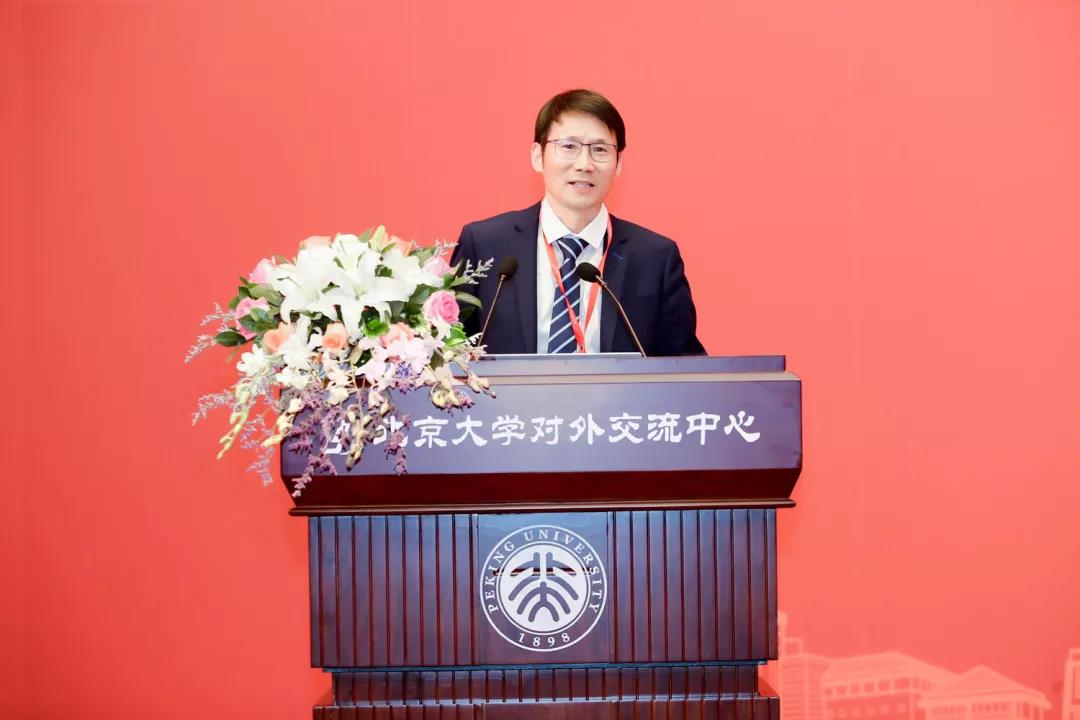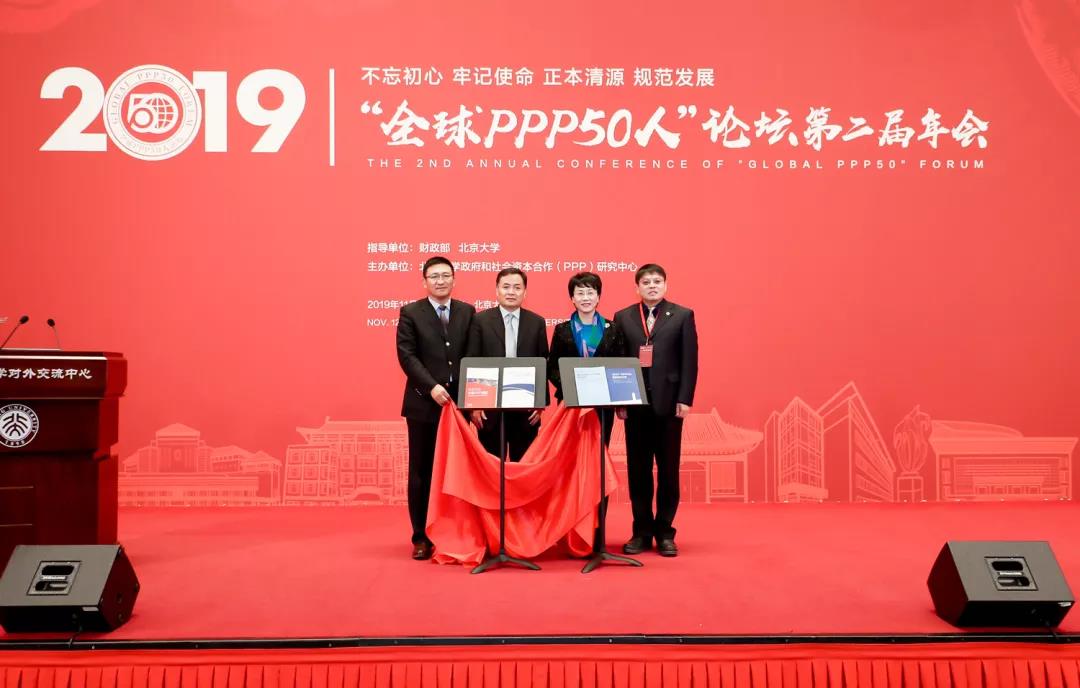CWEG Attends Peking University Second “Global PPP 50” Forum: PPP Promotes Supply-side Reform and Technological Innovation
2019-11-12
On themorning of November 12, 2019, the second annual meeting of "Global PPP50 people"forum jointly sponsored by the Ministry of Finance and Peking University washeld at Yingjie Exchange Center of Peking University. The forum aims to build athink tank and interactive exchange platform for global PPP leaders, so as tobetter promote the reform and development of PPP in China and even the world.The theme of this forum is "never forget the original intention, keep inmind the mission, straighten out the roots and standardize development".It provides intellectual support for promoting the modernization of nationalgovernance system and governance capacity, and promotes the standardized andsustainable development of PPP.
In hisspeech on how to Stimulate Private Capital to Participate in PPP Vitality inthe Current Situation, vice chairman of the 13th National Committee For theChinese People""s Political Consultative Conference, Gu Shengzhu said that topromote the deep participation of private capital in PPP, PPP should first bereturned to its original nature. He pointed out that the PPP market showed atrend of recovery in 2019. The new infrastructure construction in China hasbecome a new opportunity for PPP. The PPP mode of municipal engineeringconstruction is promising. The development PPP solves the problem of theintegration of industrialization and urbanization. The ecological environmentfield is an important space and engine for PPP to be used, and the businessenvironment of PPP should be constantly optimized.

Lou Jiwei, Former Minister of Finance and Chairman of the Society of Public Finance of China


CWEG led the formulation of national technical standards and guidelines for Distributed underground WWTP Ecosystem Technology System, and undertook major national water projects during the 13th Five-Year Plan. Besides, it has conducted a number of national demonstration projects in more than 20 regions such Beijing, Shanghai, Fujian, Sichuan and Yunnan.
Taking CWEG Beijing Tongzhou Underground WWTP, Chengdu Tianfu Underground WWTP and Dali Erhai Comprehensive Governance Project as successful examples, Dr. Hou Feng proposed science-based technological and business model solutions to resource recovery. PPP-based underground WWTPs, featuring integrated planning and implementation, appropriate intensity, and local treatment and reuse, create both ecological and economic benefits. Being more cost-effective than the conventional interception solution, they save land and piping and operating costs, replenish nearby waters, and enable comprehensive development of the land above.
Dr. Feng Hou pointed out that compared with water environment governance projects in foreign countries, those in China face tighter time schedules and higher requirements. China is resource-scarce with per capita water and land availability accounting for only one-quarter and one-third of the global average, respectively. Having a short history of environmental protection, China still has a long way to go towards ecological compensation, green water environment governance, and resource efficiency.
“It took the UK 10 years to pollute the Thames River, but 100 years to remediate it at a cost of 10 billion pounds. The Japanese government used 18 billion dollars in more than 30 years to restore the Lake Biwa to surface water Grade II level,” Dr. Hou Feng said, “So water environment governance is a highly complex long process, and thus has a more urgent need for business mode and technological innovation, so as to systematically and effectively govern water environment in a cost efficient and time efficient manner.
Statistics show that as of the end of 2018, there were 4,332 operating urban WWTPs in China, with a daily capacity of 195 million cubic meters. “If 80% of conventional WWTPs are renovated to underground WWTPs, land occupied will be reduced by 1.29 million mu (approx. 86,430 ha.) to 93,000 mu (approx. 6,231 ha.). The renovation cost will be ¥1.55 trillion, and land saved may be used for comprehensive green development which will lead to ¥10.8 trillion investment,” Dr. Feng Hou said.
Hou added, “Water environment governance is a critical part of green development. Now comprehensive water environment governance, which improves ecosystem and promotes industrial upgrading in addition to increasing water quality, is replacing the conventional model of building WWTPs. When wastewater is reclaimed, improving the ecosystem, our country will be more competitive, and people will really benefit from high-quality development.”

 中国水环境集团
中国水环境集团









